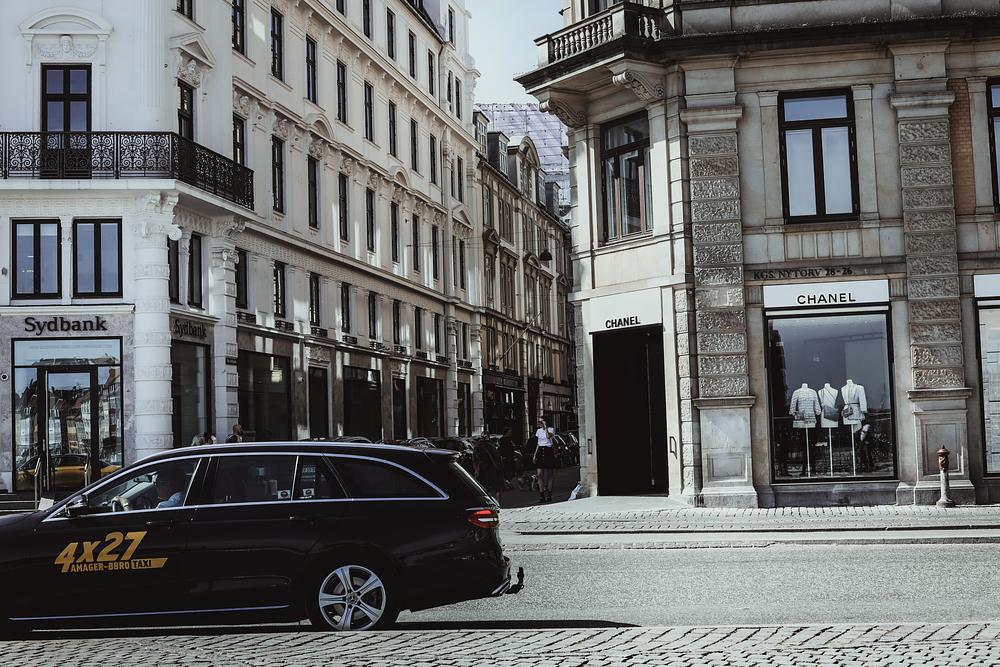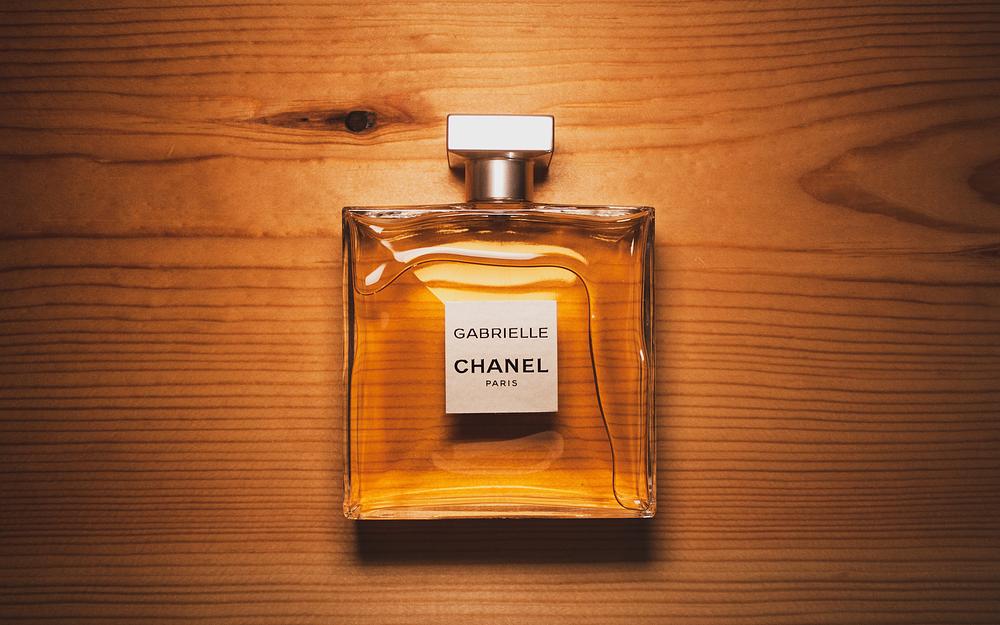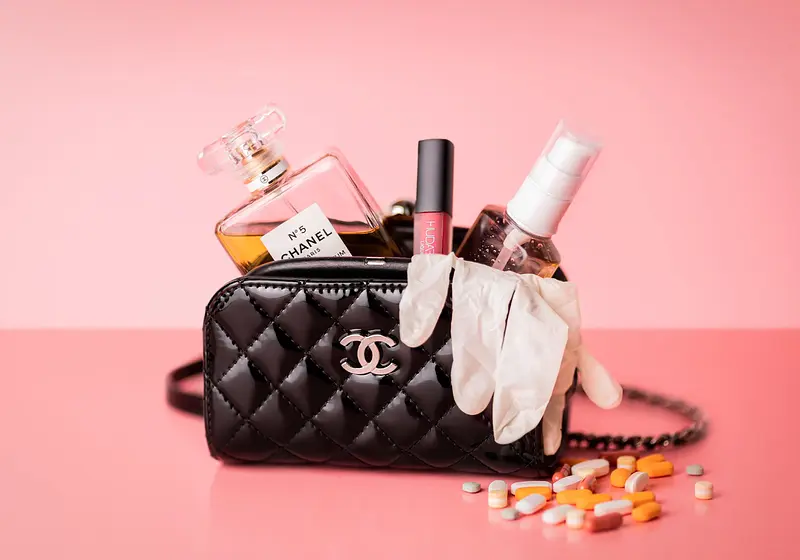We've all heard of Chanel, the famous fashion brand, and its founder, Coco Chanel. However, after the Met Gala honoring Karl Lagerfeld, Chanel's creative director for almost 40 years, some are itching to know more. What makes the brand so special?
What is with the tweed? What on Earth is a "Chanel Bride?" Frantic Google searches and Wikipedia rabbit holes have met their demise with this all-inclusive Chanel article. From its beginnings to its signature style, read on to learn everything and more about the famous fashion house.
Let us slide into your dms 🥰
Get notified of top trending articles like this one every week! (we won't spam you)Gabrielle Chanel

Los Angeles Times, CC BY 4.0, via Wikimedia Commons
Gabrielle Bonheur Chanel was born in 1883 to Jeanne and Albert Chanel. Gabrielle was born in western France and resided in less-than-luxury lodgings. Jeanne Chanel passed away in 1894, and Gabrielle was sent with her sisters to an orphanage.
Aubazine Orphanage was rough on its girls. Gabrielle cleaned, was forced to be disciplined, and most importantly, was taught how to sew. After six years in the orphanage, Gabrielle turned eighteen and moved to a boarding house in central France. She became a tailor and a poseuse, a performer. She sang "Who Has Seen Coco?" on a stage in Moulins, France, and thus was born "Coco Chanel."

Take the Quiz: What Type of Friend Are You in the Group Chat?
Are you the plan-maker, the official ghoster, or the chaotic energy that keeps things interesting? Let's find out what your messages say about you!
Fashionable Beginnings

Photo by Filip Rankovic Grobgaard on Pexels
After a failed stage career, Chanel opened a Parisian boutique in which she sold hats. Two years after the opening, famous actress Gabrielle Dorziat wore Chanel's hats in a play, and the business took off. In 1913, Chanel opened another boutique in Normandy, France.
She constructed athleisure wear and women's suits out of cheap materials. She took inspiration from the World War I militia outfits. By 1915, the House of Chanel was a household name in France. In the same year, Chanel's first Haute Couture collection was born and she took one more step towards greatness.
The House of Chanel
By the 1920s, Coco Chanel remained experimentally on-trend, contrasting the feminine flapper dress with colors and materials widely considered 'masculine,' like denim and leather. Her success and the end of the war enabled the brand to reinforce its clothing with more structure. She took inspiration from menswear, like what Chanel's boyfriend wore, and began producing tweed suits—an image that would be synonymous with Chanel for over a century. The suits were quilted, stiff, and were made to antagonize Christian Dior. Dior made extremely feminine clothes and, to quote Coco Chanel:
Dior [didn't] dress women, he [upholstered] them.
Chanel No. 5

Photo by Kade Jermark on Pexels
We've all heard the name and smelled the scent; Chanel No. 5 took the world by storm. Ernest Beaux created the perfume in 1921 in collaboration with Coco Chanel, wanting to make a "perfume as complex as a dress." The scent leads with May rose and has dozens of hints following it. Chanel held the number five dear to her heart and her superstitions, hence the name. She gifted the perfume to buyers and began selling it as its own product in 1922.
Karl Lagerfeld and Chanel
Let's skip ahead about 60 years to discuss the highly controversial Karl Lagerfeld.
In 1983, Lagerfeld became the House of Chanel's creative director. While he was less than a treat of a person, he revived the brand. Coco Chanel had passed away a decade prior, and the company was left as a shell of what it had once been. He brought back the fashion of the past, utilizing tweed suits and gold accents to a degree that superseded Coco Chanel herself.
However, he changed the silhouette. He tied in the trendy shoulder pads and shortened the skirt to give a modern, sexier look. He designed the logo we all know and love, two back-to-back c's.
He saw the dead house as a challenge and watched it morph into his prized possession. He kept the styles current while reflecting on Chanel's nostalgic past.
The Chanel Bride
Just as promised in the introduction, we're here to explain to you the concept of the Chanel Bride. In the 1980s, Karl Lagerfeld wanted something special to end the Haute Couture shows. He chose to press on his love of bridal wear and concocted the iconic Chanel Bride.
Famous models, Lagerfeld's favorites, were chosen to appear in enchantingly delicate wedding dresses to finish each show. The first model chosen was Ines de la Fressange, and in 1986, she strutted the runway side-by-side with Lagerfeld himself. In the 37 years since, there have only been a handful of Chanel Brides, and the position is highly coveted by supermodels worldwide.
The Chanel Supermodels
Of the hundreds of models that have walked the runway for Chanel, very few are considered supermodels, let alone those of the House of Chanel. One of the faces most synonymous with Chanel is Claudia Schiffer. She was unarguably Lagerfeld's favorite model and muse, being chosen as the Chanel Bride eleven times.
In addition, Devon Aoki, while still a face of Versace, is largely considered one of Chanel's supermodels. With her small frame, at only 5'6, it was shocking that Aoki was chosen as the 1999 bride. However, she had an incredibly close bond with Lagerfeld and walked the runway for the fashion brand several times.
While considered a post-supermodel, Lily Rose-Depp is also a famous name for Chanel. Her famous parents, her mother being another Chanel model, and her loyal fanbase, give the brand even more attention around the world. While there are a million muses of Karl Lagerfeld and his predecessor, Coco Chanel, these three are known for their close associations with the Chanel name.
Iconic Looks
Now that I've discussed the history, the faces, and the people behind the scenes, let's get into the actual fashion. Chanel has had its fair share of iconic looks and outfits, but here are three that are known worldwide.
This Chanel Bride look has been seen and adored twice. First seen on Claudia Schiffer, the FW 1992 is made of tweed with a tight corset and a ballgown skirt. Recently, the dress was presented on Dua Lipa at the 2023 Met Gala, honoring Karl Lagerfeld.
Another reborn beauty, this 1992 Haute Couture dress has resurged in popularity since Lily-Rose Depp at the 2019 Met Gala. Once seen on Christy Turlington, the delicate dress has several dupes and remakes, but nothing can beat the original.
We were unable to pick just three, so the photo carousel above provides an abundance of iconic looks from Chanel's Spring 1993 collection. With all things sheer and flowing fashion, this collection is the epitome of Chanel chic.
Modern Day Chanel

Photo by Ruslan Khmelevsky on Pexels
After Karl Lagerfeld's death, Chanel is said to be on a losing streak. Many celebrity red carpet outfits have been decidedly awkward, disappointing Chanel fans. The brand continues to produce clothing, jewelry, watches, makeup, and perfume. However, many say that they should stick to their nostalgic 90's styles. Currently, the fashion house is in a sunglasses phase, with a 2023 Eyewear Campaign. Their classic No. 5 perfume is still incredibly popular among all generations, and their skincare line is doing quite well.
From a tiny Parisian boutique to a fashion empire, the House of Chanel has seen it all. They have used various materials and have found their niches in surprising areas: tweed and gold. Since Karl Lagerfeld's passing, the brand hasn't been the same, but maybe there is someone out there who can change Chanel for the better, just as Lagerfeld did. We're excited to see what Chanel has in store for us, and hopefully, now, you are too!















